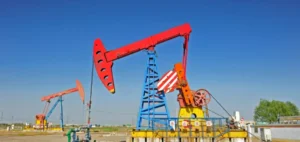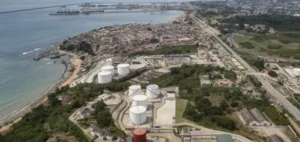Aramco plans to gain market share from companies that are reducing their oil portfolio.
Aramco forecasts 100 million b/d more than in 2019
Amin Nasser, Chairman and CEO of Aramco, spoke at the Nikkei Global Management Forum on Tuesday, November 9, 2021.
He estimates that global oil demand in 2022 will exceed pre-pandemic levels.
The surplus would be around 100 million barrels a day.
Demand for oil is already expanding.
However, demand for jet fuel is still below the pre-pandemic level of 3 to 4 million barrels per day.
Once this demand has returned to, or even exceeded, its former level, global demand will be very strong.
Forecasts based on recovery in air travel
Aramco’s Chairman bases his forecast on the recovery in air travel, but also on demand from power plants.
These are tending to switch from gas to liquid fuel supplies.
This transition should increase global demand by a further 1.5 million barrels per day.
Amin Nasser warns that supply will be too low to meet this strong demand in 2022.
He points to a lack of investment in the sector.
Demand could eat into unused stocks, which are normally used to mitigate unexpected supply disruptions.
Oil is vital for developing countries
Amin Nasser points out that countries have different energy needs, depending in particular on their level of economic development.
For example, the energy transition is much slower in developing countries.
This makes oil of vital importance.
According to Aramco’s Chairman, developing countries have the greatest need for oil and gas.
The world’s population growth is largely due to these countries.
“By 2050, there will be 2 billion more energy consumers in the world,” says Amin Nasser.
The CEO calls for a more “inclusive” energy transition policy.
This means recognizing the different energy needs of these developing countries.
In other words, recognizing the role of oil and gas in the energy transition.
An opportunity
Saudi Aramco is already the world’s largest crude oil exporter.
The company aims to increase its global production capacity from 12 million to 13 million barrels per day by 2027.
Many oil companies are looking to reduce their oil portfolios to invest in the energy transition.
Aramco can take advantage of this to gain market share.
Amin Nasser says that oil will remain a major energy source for decades to come.
Oil and gas will therefore remain the core business.
However, the company is investing in reducing its carbon emissions, with the aim of becoming carbon neutral by 2050.
These efforts involve carbon capture techniques, investment in hydrogen, etc.
Amin Nasser is confident in the oil giant’s decarbonization strategy.
“Our emissions may already be among the lowest,” he says.






















